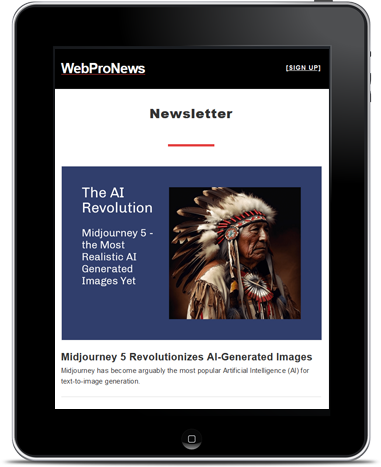The Imperative of Resilience in a Volatile World
The Consumer Packaged Goods (CPG) industry faces a landscape defined by unrelenting global disruptions—geopolitical tensions, climate-driven resource scarcity, and persistent logistical bottlenecks. For Chief Operating Officers (COOs) at enterprise-level CPG firms, these challenges have elevated supply chain resilience to the top of the strategic agenda. No longer a secondary concern, the ability to maintain operational continuity amid🍌st chaos has become a competitive differentiator, directly impacting profitability, consumer trust, and market share. This article explores how COOs are navigating these turbulent waters, leveraging adv✃anced technologies, strategic partnerships, and innovative practices to fortify their supply chains against ongoing and future disruptions.
The stakes are high. A single supply chain failure can ripple across the value chain, leading to stockouts, eroded consumer loyalty, and significant financial losses. With 80% of CPG supply chains projected to integrate AI by the end of 2025, COOs are at the forefront of a technological revolution that promises to redefine operational agility. However, technology alone is not a panacea; it must be paired with a holistic approach that encompasses supplier diversification, real-time visibility, and workforce adaptability. This article delves into the strategies and tools COOs are deploying to build resil🎉ient supply chains, offering actionable insights for CPG leaders in an era of perpetual uncertainty.
The State of Global Disruptions: A Persistent Challenge
The pa⛎st few years have been a crucible for CPG supply chains, and 2025 shows no signs of reprieve. Geopolitical tensions, such as trade disputes in the Asia-Pacific region and sanctions affecting key commodity markets, have disrupted the flow of raw materials like palm oil, cocoa, and packaging components. Climate change exacerbates these issues, with extreme weather events—floods in Southeast Asia, droughts in Latin America—impacting agricultural yields and driving up costs. Meanwhile, logistical challenges persist: port congestion in major hubs like Los Angeles and Rotterdam, coupled with a global shortage of shipping containers, has extended lead times by 20✱-30% compared to pre-2020 levels.
For COOs, these disruptions are not isolated incidents 🤡but a new normal. A recent industry survey revealed that 65% of CPG executives experienced at least one major supply chain disruption in the past 12 months,꧂ with 40% reporting direct impacts on revenue. The cost of inaction is steep: stockouts can lead to a 5-10% drop in market share, as consumers pivot to competitors with more reliable availability. Against this backdrop, COOs are reimagining supply chain management, prioritizing resilience over traditional cost-centric models.
Building Resilience: Strategies for the Modern COO
To navigate this volatil⛦e environment, COOs are adopting a multi-pronged approach that balances technological innovꦅation with strategic foresight. Below, we outline the key strategies driving supply chain resilience in 2025.
1. AI-Driven Forecasting and Real-Time Visibility
Artificial intelligence (AI) has emerged as a cornerstone of supply chain resilience, with 80% of CPG supply chains expected to integrate AI by year-end. AI-driven forecasting models, powered by machine learning, enable COOs to anticipate disruptions before they occur. By analyzing historical data, weather patterns, geopolitical events, and consumer demand signals, these systems provide predictive insights🎃 with up to 90% accuracy, allowing firms to adjust inventory levels and reroute shipments proactively.
Real-time visibility is equally critical. Advanced tracking systems, often integrated with Internet of Things (IoT) sensors, provide end-to-end transparency across the supply chain. For example, a leಞading CPG firm recently implemented IoT-enabled pallets to monitor the condition of perishable goods during transit, reducing spoilage by 15%. COOs aꦕre leveraging these tools to create a “digital twin” of their supply chain—a virtual model that mirrors physical operations—enabling rapid scenario planning and decision-making.
2. Supplier Diversification and Nearshoring
The era of si🅷ngle-source dependency is over. COOs are diversifying their supplier base to mitigate risks associated with regional disruptions. This involves not only expanding the number of suppliers but also prioritizing geographic diversity. For instance, firms reliant on Southeast Asian palm oil are now sourcing from West Africa and Latin America, reducing exposure to regional instability.
Nearshoring is another key trend. By shifting production closer to end markets—such as moving manufac🎀turing from China to Mexico for North American consumers—CPG firms are reducing lead times and transportation costs while minimizing exposure to global shipping delays. A recent analysis found that nearshoring can cut lead times by 25% and reduce logistics costs by 10-15%, all while enhancing responsiveness to demand fluctuations.
3. Strategic Partnerships and Collaborative Ecosystems
Resilience is not a solo endeavor; it requires collaboration across the value chain. COOs are forging strategic partnerships with suppliers, logistics providers, and even competitors to create a more robust ecosystem. Collaborative planning, forecasting, and replenishment (CPFR) frameworks enable real-time data sharing, ensuring all stakeholders are aligned on inventory needs and potentialꦦ r🎐isks.
Some firms are taking this a step further by participating in industry-wide coalitions. For ex𒁃ample, a consortium of CPG companies recently launched a shared logistics platform to pool shipping resources, reducing costs and improving reliability during peak demand periods. Such initiatives not only enhance resilience but also position COOs as industry leaders in fostering collective stability.
4. Workforce Agility and Upskilling
Technology is only as effective as the people behind it. COOs are investing in workforce agility, ensuring employees are equipped to handle disruptions. This includes cross-training staff to perform multiple roles—such as training warehouse workers to assist with logistics planning during a crisis—and upskilling teams in AI and data analytics. A digitally literate workforce c𒉰an leverage AI tools more effectively, translating insights into actionable strategies.
Moreover, COOs are prioritizing employee well-being to maintain productivity during turbulent times. Flexওible work arrangements, mental health support, and competitive incentives are helping retain talent in a competitive labor market, ensuring operational continuity even under pressure.
5. Sustainability as a Resilience Driver
Sustainability and resilience are increasingly intertwined. Climate-driven disruptions underscore the need for sustainable practices that reduce dependency on volatile resources. C🐬OOs are adopting circular supply chain models, such as recycling packaging materials and repurposing byproducts, to create a more self-sufficient operation. For instance, a major CPG firm recently reduced its reliance on virgin plastic by 30% through a closed-loop recycling program, simultaneously lowering costs and mitigating supply risks.
Additionally, blockchain technology is being deployed to enhance transparency in sourcing, ensuring c♐ompliance with environmental and ethical standards. This not only meets consumer demands for sustainability but also reduces the risk of regulatory penalties that could disrupt operations.
The Role of Technology: Beyond AI
While AI is a linchpin, other technologies are also critical to supply chain resilience. Robotics and automation are streamlining warehouse operations, reducing labor🅠 dependency and improving throughp💟ut during peak periods. A leading CPG firm reported a 20% increase in order fulfillment rates after deploying autonomous mobile robots in its distribution centers.
Blockchain, as mentioned, enhances transparency, while 5G connectivity enables faster data transfer, supporting real-time decision-making. COOs are also exploring digital freight ma✅rketplaces to secure shipping capacity on demand, bypassing traditional bottlenecks. These technologies, when integrated, create a resilient, future-proof supply chain capable of withstanding global disruptions.
Challenges and Considerations
Despite these advancements, COOs face significant hurdles. The high cost of technology adoption can sꦫtrain budgets, particularly for firms already grappling with margin pressure. Integration challenges—such as aligning legacy systems with new AI platforms—can delay implementation, while data security remains a concern as supply chains become more digitized.
Moreover, resilience requires a cultural shift. COOs must foster a mindset of adaptability across their organizations, breaking down silos a🀅nd encouraging cross-functional collaboration. This can be a slow process, particularly in large, hierarchical enterprises.
Strategic Imperatives for COOs
To build aꦏ resilient supply chain in 2025, COOs must act decisively on🍌 the following fronts:
- Prioritize Scalable Technology Investments: Focus on AI and IoT solutions that offer immediate value, such as predictive analytics and real-time tracking, while planning for long-term integration.
- Diversify and Localize Supply Networks: Reduce dependency on single regions by diversifying suppliers and exploring nearshoring opportunities to enhance agility.
- Build Collaborative Ecosystems: Partner with stakeholders across the value chain to share risks and resources, ensuring collective resilience.
- Invest in People and Processes: Upskill employees and streamline operations to maximize the impact of technological investments.
- Embed Sustainability in Operations: Adopt circular models and transparent sourcing to mitigate resource risks and align with consumer expectations.
Resilience as a Competitive Advantage
c The road ahead is fraught with challenges, but those who act with foresight and agility will not only weather t🍌he storm but emerge stronger, ready to lead the indust🦄ry into a more resilient future. For CPG COOs, the time to act is now.




 WebProNews is an iEntry Publication
WebProNews is an iEntry Publication